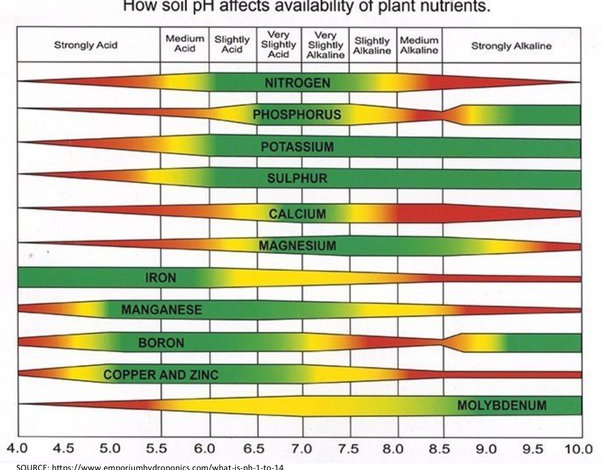
With summer in full swing, it’s important to remember Hillsborough County’s fertilizer ordinance. From June 1st to September 30th, you can’t apply fertilizers containing nitrogen (N) or phosphorous (P) to landscapes and lawns unless exempted by Ordinance 21-42.
But don’t worry, you can still support your landscape! Micronutrients are essential for plant health, especially during the hot summer months when plants can become stressed. While macronutrients are the big building blocks providing essential energy for plant growth, micronutrients support various vital processes, ensuring plants thrive. You can apply these important micronutrients during the fertilizer ordinance period to give your plants the extra boost they need.
Here’s a quick breakdown of these 7 vital micronutrients and their benefits:
- Boron (B):
-
- Role: Supports cell wall formation and stability, essential for reproductive growth
- Symptoms of Deficiency: Stunted growth, thickened or brittle leaves
- Chlorine (Cl):
-
- Role: Involved in osmosis and ionic balance; helps with photosynthesis
- Symptoms of Deficiency: Wilting, chlorosis, and reduced growth
- Copper (Cu):
-
- Role: Important for photosynthesis, respiration, and the formation of lignin in cell walls
- Symptoms of Deficiency: Young leaves turning dark green, twisted, or misshapen leaves
- Iron (Fe):
-
- Role: Crucial for chlorophyll synthesis and function, involved in energy transfer
- Symptoms of Deficiency: Interveinal chlorosis (yellowing between veins) on young leaves
- Manganese (Mn):
-
- Role: Plays a role in photosynthesis, nitrogen assimilation, and the synthesis of some enzymes
- Symptoms of Deficiency: Interveinal chlorosis, necrotic spots on leaves
- Molybdenum (Mo):
-
- Role: Essential for nitrogen fixation and the reduction of nitrates within the plant
- Symptoms of Deficiency: Marginal scorching and cupping or rolling of leaves
- Zinc (Zn):
-
- Role: Important for growth hormone production and internode elongation
- Symptoms of Deficiency: Shortened internodes, rosette formation, and smaller leaves
Tips for Effective Micronutrient Management:
- Soil Testing: Regular soil fertility testing is crucial to identify specific micronutrient deficiencies and adjust your fertilization strategy accordingly. More on soil testing.
- Proper Timing: Applying micronutrients at the right time, such as during planting, can prevent deficiencies and ensure optimal plant growth.
- pH Management: Soil pH greatly influences the availability of micronutrients. Maintaining the optimal pH range for your specific plants is essential for adequate nutrient uptake.

- Soil pH Chart: The chart uses bars or lines to indicate the availability of each nutrient across different pH levels. The thickness or height of these bars represents the relative availability of the nutrients.
- Acidic Soils (pH 4.0 – 6.0): In highly acidic soils, nutrients like iron, and manganese are more available, which can sometimes lead to toxicity. However, phosphorus, calcium, and magnesium become less available.
- Neutral Soils (pH 6.0 – 7.0): This range is generally optimal for most plants, as it allows for the maximum availability of essential nutrients. Phosphorus, potassium, and most micronutrients are readily available.
- Alkaline Soils (pH 7.0 – 9.0): In alkaline conditions, nutrients like phosphorus, iron, manganese, copper, and zinc become less available, potentially leading to deficiencies.
Applying Micronutrients Safely:
While you can’t use fertilizers with nitrogen or phosphorous during the summer ban, micronutrient supplements are a great alternative to keep your garden thriving. Here are some tips for applying micronutrients:
- Read Labels: Ensure you’re using products specifically labeled for micronutrient application. Labels typically list micronutrients as percentages by weight in elemental form.
- Follow Instructions: Overapplication can be harmful, so always adhere to the recommended dosages.
- Spot Treatments: Focus on areas where plants show signs of deficiency rather than a blanket application.
By understanding and utilizing micronutrients, you can help your plants withstand the summer stress while complying with local regulations.
References:
- Micronutrients Considerations for Warm-Season Forage Grass Systems in Florida – https://edis.ifas.ufl.edu/publication/AG419
- Nutrient Deficiency Symptoms of Woody Ornamental Plants in South Florida – https://edis.ifas.ufl.edu/publication/EP362
- Hillsborough County On Our Pond Newsletter – Vol. 24, No. 2, Winter 2023: – https://hillsborough.wateratlas.usf.edu/upload/documents/PW_Newsletter%20Template_Winter23-edited-11302023.pdf
- Florida Fertilizer Ordinance Interactive Map: https://ffl.ifas.ufl.edu/fertilizer/#!
- How to Find Your Fertilizer Ordinance – https://blogs.ifas.ufl.edu/hillsboroughco/2023/05/05/sh-fertilizer-ordinances-how-do-i-find-my-ordinance/
 3
3
